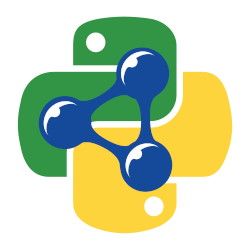Creating RDF triples¶
Creating Nodes¶
RDF data is a graph where the nodes are URI references, Blank Nodes or Literals. In RDFLib, these node types are
represented by the classes URIRef, BNode, and Literal.
URIRefs and BNodes can both be thought of as resources, such a person, a company, a website, etc.
A
BNodeis a node where the exact URI is not known - usually a node with identity only in relation to other nodes.A
URIRefis a node where the exact URI is known. In addition to representing some subjects and predicates in RDF graphs,URIRefs are always used to represent properties/predicatesLiteralsrepresent object values, such as a name, a date, a number, etc. The most common literal values are XML data types, e.g. string, int… but custom types can be declared too
Nodes can be created by the constructors of the node classes:
from rdflib import URIRef, BNode, Literal
bob = URIRef("http://example.org/people/Bob")
linda = BNode() # a GUID is generated
name = Literal("Bob") # passing a string
age = Literal(24) # passing a python int
height = Literal(76.5) # passing a python float
Literals can be created from Python objects, this creates data-typed literals. For the details on the mapping see
Literals.
For creating many URIRefs in the same namespace, i.e. URIs with the same prefix, RDFLib has the
rdflib.namespace.Namespace class
from rdflib import Namespace
n = Namespace("http://example.org/people/")
n.bob # == rdflib.term.URIRef("http://example.org/people/bob")
n.eve # == rdflib.term.URIRef("http://example.org/people/eve")
This is very useful for schemas where all properties and classes have the same URI prefix. RDFLib defines Namespaces for some common RDF/OWL schemas, including most W3C ones:
from rdflib.namespace import CSVW, DC, DCAT, DCTERMS, DOAP, FOAF, ODRL2, ORG, OWL, \
PROF, PROV, RDF, RDFS, SDO, SH, SKOS, SOSA, SSN, TIME, \
VOID, XMLNS, XSD
RDF.type
# == rdflib.term.URIRef("http://www.w3.org/1999/02/22-rdf-syntax-ns#type")
FOAF.knows
# == rdflib.term.URIRef("http://xmlns.com/foaf/0.1/knows")
PROF.isProfileOf
# == rdflib.term.URIRef("http://www.w3.org/ns/dx/prof/isProfileOf")
SOSA.Sensor
# == rdflib.term.URIRef("http://www.w3.org/ns/sosa/Sensor")
Adding Triples to a graph¶
We already saw in Loading and saving RDF, how triples can be added from files and online locations with with the
parse() function.
Triples can also be added within Python code directly, using the add() function:
- Graph.add(triple)[source]
Add a triple with self as context
add() takes a 3-tuple (a “triple”) of RDFLib nodes. Using the nodes and
namespaces we defined previously:
from rdflib import Graph, URIRef, Literal, BNode
from rdflib.namespace import FOAF, RDF
g = Graph()
g.bind("foaf", FOAF)
bob = URIRef("http://example.org/people/Bob")
linda = BNode() # a GUID is generated
name = Literal("Bob")
age = Literal(24)
g.add((bob, RDF.type, FOAF.Person))
g.add((bob, FOAF.name, name))
g.add((bob, FOAF.age, age))
g.add((bob, FOAF.knows, linda))
g.add((linda, RDF.type, FOAF.Person))
g.add((linda, FOAF.name, Literal("Linda")))
print(g.serialize())
outputs:
@prefix foaf: <http://xmlns.com/foaf/0.1/> .
@prefix xsd: <http://www.w3.org/2001/XMLSchema#> .
<http://example.org/people/Bob> a foaf:Person ;
foaf:age 24 ;
foaf:knows [ a foaf:Person ;
foaf:name "Linda" ] ;
foaf:name "Bob" .
For some properties, only one value per resource makes sense (i.e they are functional properties, or have a
max-cardinality of 1). The set() method is useful for this:
from rdflib import Graph, URIRef, Literal
from rdflib.namespace import FOAF
g = Graph()
bob = URIRef("http://example.org/people/Bob")
g.add((bob, FOAF.age, Literal(42)))
print(f"Bob is {g.value(bob, FOAF.age)}")
# prints: Bob is 42
g.set((bob, FOAF.age, Literal(43))) # replaces 42 set above
print(f"Bob is now {g.value(bob, FOAF.age)}")
# prints: Bob is now 43
rdflib.graph.Graph.value() is the matching query method. It will return a single value for a property, optionally
raising an exception if there are more.
You can also add triples by combining entire graphs, see Set Operations on RDFLib Graphs.
Removing Triples¶
Similarly, triples can be removed by a call to remove():
- Graph.remove(triple)[source]
Remove a triple from the graph
If the triple does not provide a context attribute, removes the triple from all contexts.
When removing, it is possible to leave parts of the triple unspecified (i.e. passing None), this will remove all
matching triples:
g.remove((bob, None, None)) # remove all triples about bob
An example¶
LiveJournal produces FOAF data for their users, but they seem to use
foaf:member_name for a person’s full name but foaf:member_name
isn’t in FOAF’s namespace and perhaps they should have used foaf:name
To retrieve some LiveJournal data, add a foaf:name for every
foaf:member_name and then remove the foaf:member_name values to
ensure the data actually aligns with other FOAF data, we could do this:
from rdflib import Graph
from rdflib.namespace import FOAF
g = Graph()
# get the data
g.parse("http://danbri.livejournal.com/data/foaf")
# for every foaf:member_name, add foaf:name and remove foaf:member_name
for s, p, o in g.triples((None, FOAF['member_name'], None)):
g.add((s, FOAF['name'], o))
g.remove((s, FOAF['member_name'], o))
Note
Since rdflib 5.0.0, using foaf:member_name is somewhat prevented in RDFlib since FOAF is declared
as a ClosedNamespace() class instance that has a closed set of members and
foaf:member_name isn’t one of them! If LiveJournal had used RDFlib 5.0.0, an error would have been raised for
foaf:member_name when the triple was created.
Creating Containers & Collections¶
There are two convenience classes for RDF Containers & Collections which you can use instead of declaring each triple of a Containers or a Collections individually:
Container()(alsoBag,Seq&Alt) and
See their documentation for how.
